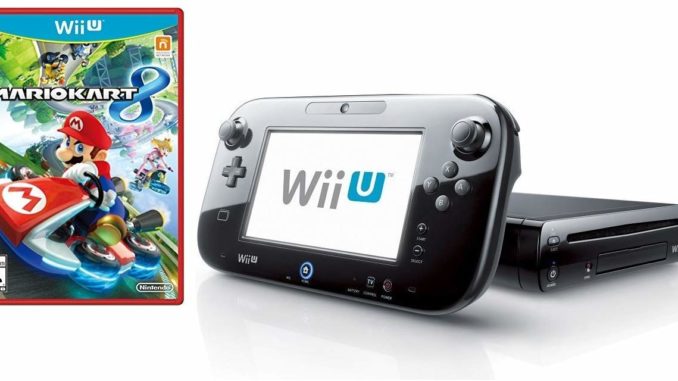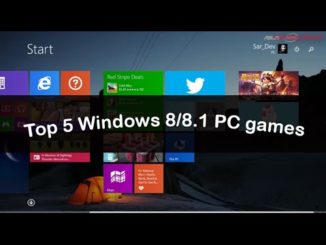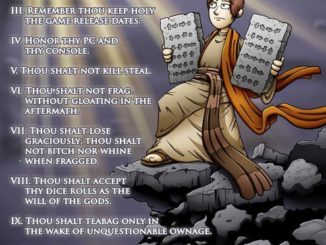
Since the Wii U’s release on November 12th of last year, it has been at the center of some mixed criticism and a lot of discussion about Nintendo’s current business model. It launched with some good games, but it’s taken the entire first year to expand from that and to really start getting some strong and unique titles. At $349.99 for the 32GB “Deluxe” model, it has had a hard time hitting its target market in competing with the PS3 and Xbox 360. That may not change with the upcoming Xbox One and PS4 but the Wii U is seeing a $50 price drop on September 20th, and either way it shouldn’t be dismissed just yet.
The system is a nice piece of hardware; it feels sturdy and not at all cheap, despite being thin and streamlined. Even after being on for hours at a time, it doesn’t get hot or run loudly. It has HDMI and composite outputs (it comes with an HDMI cable), an SD card slot and 4 USB ports. The Wii U comes with either 8GB or 32GB of system memory that can be expanded with a USB hard drive (all the way up to 2TB), so plenty of memory can be added if you ever need that much. Being able to buy a base system with some memory and expand it so much should actually be cheaper than what current systems have been doing at least. Even though it has a USB slot, you cannot use SD cards for game downloads- that is just for Wii stuff and game saves.
Much of the discussion and controversy is based on how it compares to the Xbox 360 and PlayStation 3, and the upcoming next gen systems. Honestly, Wii U games look just fine, with very modern and clean HD graphics. New Super Mario U looks very sharp and ZombiU (like most launch titles) had good things and some sloppy things in the graphics department. I have yet to experience any frame rate issues at all which is a big plus, and more important than other parts of a game’s presentation. So is it truly under powered? On paper, yes- but remember that at the 360’s launch, some of its games just kind of looked like Xbox games. The Wii U has some games that look like current PS3 games. But look how far those systems have come in 6 years: the hardware in the Wii U is more current than both the PS3 and 360 and it shows promise. Games on the way and the ones released since launch have shown some very nice HD graphical presentations and it can really only get better as years go on. Nintendo has a knack for pulling the most out of their systems- just look at Super Mario Galaxy on the Wii.
The actual gameplay is very interesting and very new, and at the same time feels familiar. Most of the WiiU experience (at least for now) involves the GamePad, which gives a dual screen experience (your TV and the screen in your hand). Each game puts this to use differently and can be as complicated a dual screen experience as the DS, or only used for maps and inventory or extra buttons and/or just for allowing off TV play. ZombiU uses it for inventory and maps mostly but it is also used for in game events and as a camera- all cool features that help flesh out the game. It also allows for mini events like lock picking to take place on the GamePad screen while your game on the TV switches views for optimal awareness of your surroundings. Nintendo Land makes uses of the Gamepad with more camera control, full gameplay, secondary buttons, and as an input device. Balloon Trip (based on Balloon Fight from the NES), has you using the touch screen to control the wind to move your character. This is a very relaxed approach and very reminiscent of many DS games and will likely show up in many casual titles. More recent titles like Pikmin 3 used it as a map and for off TV play; the map always being ready allowed for fast multi-tasking. Of course some games may not use the GamePad at all; possibly those developers targeting more “hardcore” crowds will forego it entirely. That would be a shame; the GamePad doesn’t really slow anything down and allows for more options. But using both the Pro controller and having the GamePad sitting on its stand to be used for other things could be an interesting feature as well.
The GamePad is an impressive controller and comfortable to use. It isn’t too heavy and the grips make it easy to hold up, relaxed in your lap or with one hand. All of the (familiar ABXY) buttons feel very responsive. The D-pad feels classic and well-sized and the joysticks are very responsive and smooth and click well when used as buttons. The shoulder buttons- not triggers like the Gamecube controller, but rather buttons like the Wii classic pro controller- are well made. There is a camera built into the controller which works well, in addition to loud and clear speakers. Battery life is not an issue- by the time your battery is exhausted you should probably be letting your system have a break anyway. And while the GamePad can’t be charged by the system, the dock with the deluxe bundle makes charging it easy and looks nice on display.
The screen on the Gamepad is the main focus and really brings a lot to the table. It is as responsive as the DS and 3DS touch screens, just a lot bigger and with pretty good resolution. It isn’t going to be as clear as your HD TV screen but it doesn’t look sloppy either. I also found that reaching for quick touches with my thumbs is easy (even with my shorter fingers). The last thing it does is work as a remote for your cable box and TV. You can switch the input on your TV or turn up the volume while playing without needing to get up or use another remote.
Nintendo has finally taken a big step into online gameplay and connectivity with the Miiverse. Sure, you have video chat, and friend lists but the MiiVerse integrates everything when you turn it on or play games. MiiVerse as an app is essentially where you manage your friends and profile but it also functions as a giant Nintendo forum or social hub where you post twitter-like updates and photos of your gaming experiences. It also allows you to chat with friends; hopefully later on it will be able to give you a notification when your friend responds.
While this is all cool, how it integrates directly into games is the best part. When playing New Super Mario U, MiiVerse updates can appear on the over world map relating to each level. Or when you are sitting in the Mii plaza the Miis that appear are essentially talking using the MiiVerse posts. You may even see Miis show up in games; the best example right now is in Nintendo Land where they walk around your theme park plaza or show up in the background of the games. MiiVerse can be accessed on the fly while playing any game too, so you can always update it or see what someone else is saying about the game. When you switch to MiiVerse your game pauses and that screen is what you can post to MiiVerse if you so desire. Certain games can even implement a sort of achievement system where they ask if you want to post to MiiVerse when you do something cool; New Super Mario U does this now.
All of this is linked and used with a Nintendo Network ID, a.k.a. your username. This makes users easy to friend and find, a big and welcome change to the deservedly maligned friend codes. Unfortunately these IDs are linked to the console where you register them; surely this is related to some sort of privacy and protection policy, but inconvenient if your system should die or if you want to update to a special edition color later. Nintendo has hinted at changing this, but nothing has happened yet.
The Wii U is backwards compatible with the Wii and Wii U games support Wiimotes and other Wii accessories. Compatibility functions for Wii games cause you to boot to a new menu. You’ll use your Wiimote at this point and only Wii accessories. Wii games do actually play in 1080p, as do all the menus and anything else. I played Goldeneye for a bit and you can see a difference, both good and bad. Some things in game look much smoother from the upscale but mistakes or ugly filters stand out more; the cut scenes looked really gross. This is because it is an upscale of resolution but no re-rendering is happening, no new filter or anything. This isn’t like emulation where new rendering processes can be applied; it is just a resolution increase. So you’ll get good things and bad things from playing Wii games on Wii U- it depends on the game. Either way the backwards compatibility is a nice and welcome feature.
To sum it all up, I’m pretty happy with my Wii U and feel like it has a promising future even after a very slow year. My Wii had its moments of constant play and heavy dust collecting and even if my Wii U meets that same kind of fate I don’t feel like my money was wasted. The system had a decent price point which is only better with the recent $50 price drop and has already proved that it can be very fun and opens a world of new gaming possibilities. As the game library increases we will see some fun games; if you are a social gamer and a social network lover it may be a system to check out just for that. The only issues the Wii U has is a sparse library, which should improve, and the fact that despite being a nice piece of hardware it will not hold up as well during this next generation of gaming. It is a sharp HD system but due to the small gap in power it will eventually fall to being a system for Nintendo exclusives again.
Proudly WWW.PONIREVO.COM



